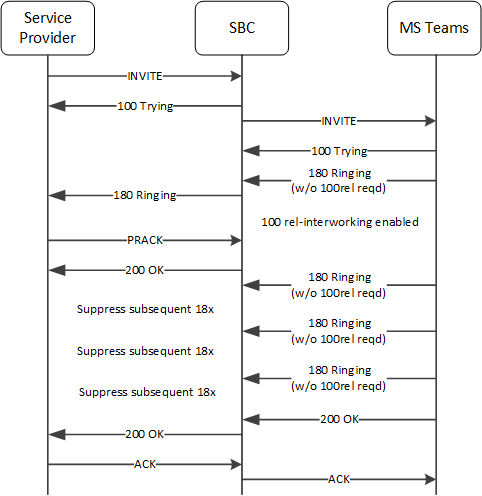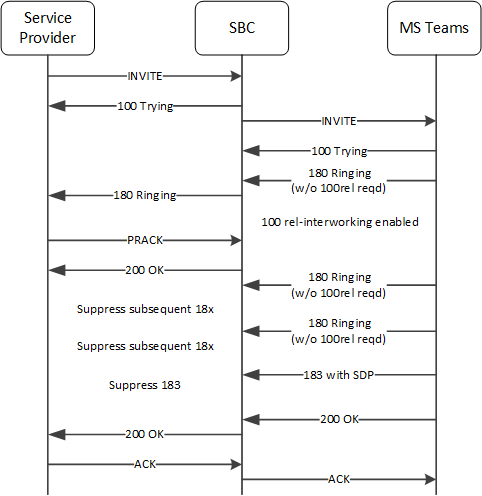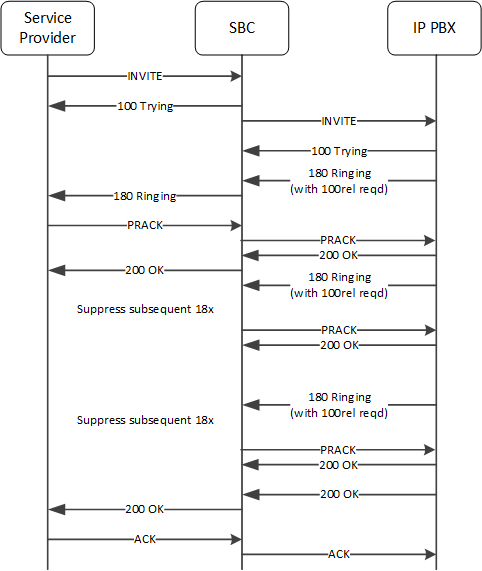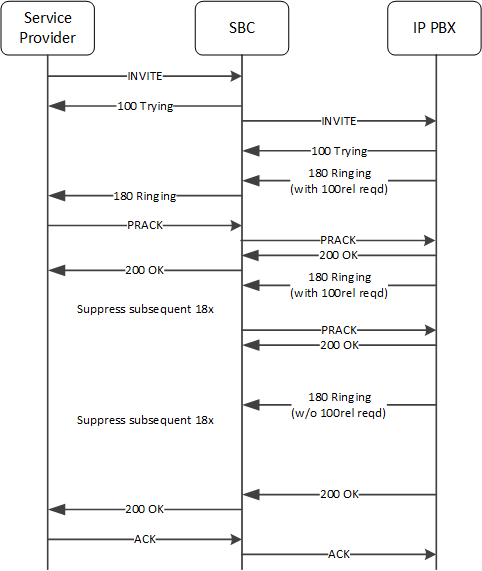Call Flows for 18x Suppression
This section provides call flow diagram on this 18x suppression feature.
Scenario-1: MS Teams – Media Bypass Enabled, single device login
This scenario includes the ESBC forwarding the first 180 response to the UAC side (Service Provider) and then suppressing subsequent 180 responses received from the UAS side (MS Teams). This scenario requires that you enable the Drop-Additional-Provisional configuration in the spl-options on the egress side.

Scenario-2: MS Teams – Media Bypass Enabled, multiple device login
In this scenario, the ESBC forwards the first 180 to the PSTN from MS-Teams and suppresses all subsequent 180 messages. In this case, there are multiple endstations responding to the INVITE within the MS Teams domain.
Any device that previously send a 180 can send the 200 OK. If a 200 OK comes from the device where the respective 180 ringing was suppressed, the ESBC forwards the 200 OK to the service provider as soon as it receives it from MSTeams. In this case, the service provider must be configured to be aware that the 200 OK may have a “to:” tag that does not match the previous 180/183 received.

Scenario-3: MS Teams – Media Bypass Disabled
This scenario includes the ESBC forwarding the first 180 response to the UAC side (Service Provider) and then suppressing subsequent 180 responses, including 183 response from the UAS side (MS Teams). This scenario requires that you enable the Drop-Additional-Provisional SPL option on the egress side.

Scenario-4: 180 Response received with 100rel required
In this scenario, the ESBC forwards only the first 180 with 100rel required while suppressing the subsequent 180s. In addition, the system sends PRACKs to the IP-PBX for the suppressed 180s, and accepts the 200 OKs for those PRACKs.
This scenario requires that you enable 100rel-interworking on the egress sip-interface to manage the 180/PRACK sequences with the IP PBX. Similarly, you must enable 100rel-interworking on the ingress sip-interface to manage the 180/PRACK transaction with the service provider.

Scenario-5: 180 Responses received with and without 100rel required
This flow is the same as Scenario 4 with the exception that it includes 180 messages with and without 100rel required. The difference between the scenarios is that the ESBC does not need to manage the PRACK/200 OK transactions when the 180 does not require 100rel. The configuration requirements are the same as for Scenario 4.
